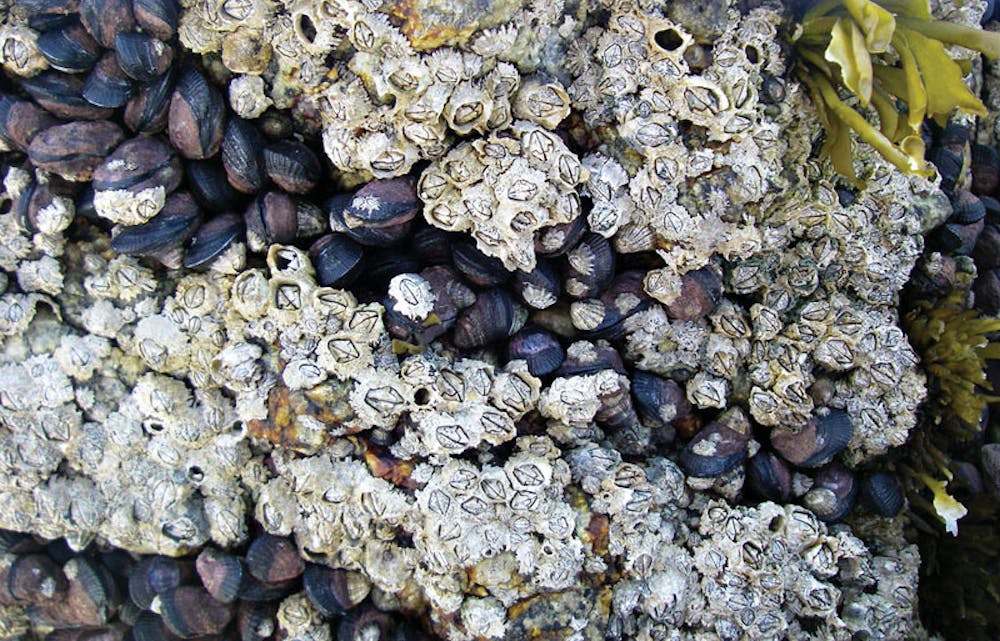This April, the senior thesis-turned-research paper of Emily Lamb ’11 — which investigates barnacle behavior as influenced by temperature — will be published in the Journal of Experimental Marine Biology and Ecology.
Lamb began her research several years ago when she studied abroad in Chile and interned in a lab, she said. Always interested in climate change, Lamb said she originally planned to work with barnacles in Providence and was hoping to do a field-based ecology project with her thesis adviser, Heather Leslie, assistant professor of environmental studies and biology. But when the possibility of pursuing her interest in intertidal ecology in Chile arose, she “jumped on the opportunity,” Lamb said.
The findings of the study were unexpected, said Leslie, who co-authored the paper. Barnacles are “very sensitive to temperature,” she said, and findings typically illustrate a relationship between temperature shifts and changes in barnacles’ interactions with other nearby barnacle species. But the findings of Lamb’s research in Chile did not point to such results, Leslie said.
What happens in one ecosystem is not the same as what happens everywhere, so it’s important not to over-generalize the role of climate in different species’ behaviors, Lamb said. To conduct her study, she changed the amount of shade covering two barnacle species’ habitats to determine how they would respond to different temperatures. She found that lower temperatures influenced the barnacle species’ growth but not their interactions with each other.
Where intertidal organisms live on shorelines is influenced by temperature, Leslie said. This is “conventional wisdom” that has been shown time and again, she added, but what makes Lamb’s work interesting is that it suggests something different.
While a change in temperature will usually “tip the balance of a competitive hierarchy between the two barnacle species,” the study showed temperature did not differentially affect the two species, wrote Jennifer Shinen, professor of biological sciences at the Pontifical Catholic University of Chile and another co-author of the paper, in an email to The Herald.
“It’s important to understand the exceptions if we’re to predict how ecosystems are going to change with climate change,” Leslie said.
The “growth result is really interesting,” since the data suggests barnacles grow faster in cooler areas, wrote Christopher Harley ’94, an associate professor of zoology at the University of British Columbia who was not involved in the study, in an email to The Herald.
“It would be very interesting to extend the experiment into periods of hotter weather … to see if higher temperatures have a stronger effect on the barnacle that was expected to be wimpier,” Harley wrote. He added that he would also be interested in seeing the variability of temperatures from year to year to better understand how weather variation over a barnacle’s lifespan influences its overall behavior.
“These findings inspire new questions and motivate more extensive studies,” Shinen wrote.
Harley called Lamb’s manipulation of temperatures in the field “great,” adding that a lesser reliance on correlational studies helps to explain “why species live the way they do.”
“I didn’t really have many expectations going in,” Lamb said. Though she initially thought the process would be more straightforward, the analysis of the data was more intensive than she predicted, she said, adding that she learned a lot about where to focus her findings given her unexpected results.
Additionally, the paper-writing process following her thesis work and graduation from Brown was much more painstaking than she had predicted, she said. Writing to be published in a peer-reviewed journal is much more “nitpicky” than thesis work, she said.
Despite challenges coordinating between the United States and Chile, “it’s been great,” Lamb said. She noted that she particularly enjoyed getting to spend time in and near the water. Lamb is currently working on a new project with barnacles that seeks to answer different questions.
“It’s fantastic,” said Leslie, who worked with Lamb through the entire process. Lamb’s experience provides a “nice example of how Brown undergraduates can take their research and turn it into an even greater opportunity,” she said.

ADVERTISEMENT
More




